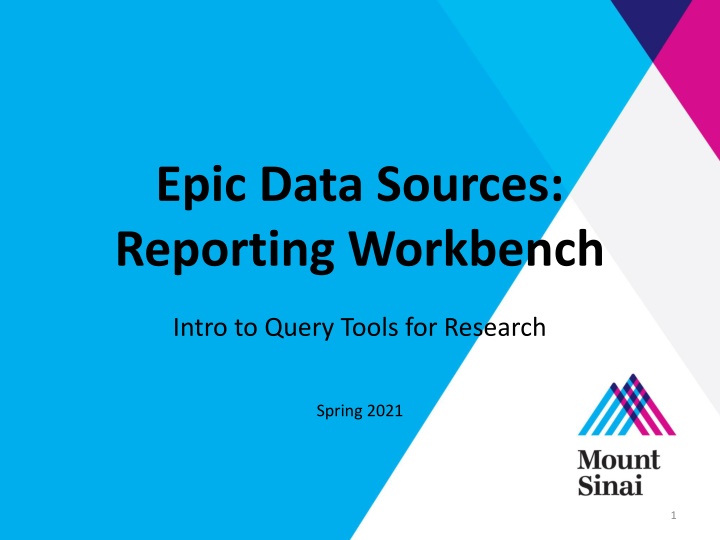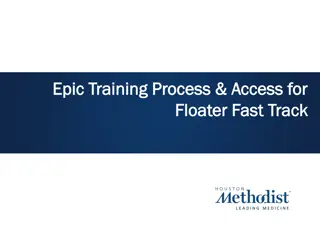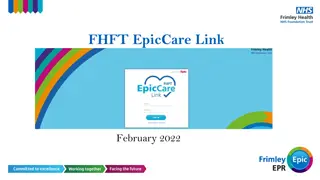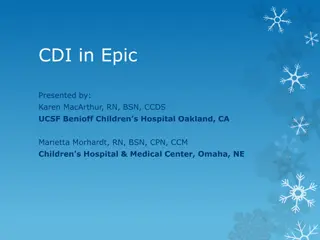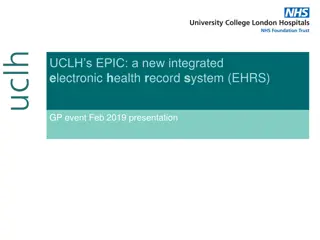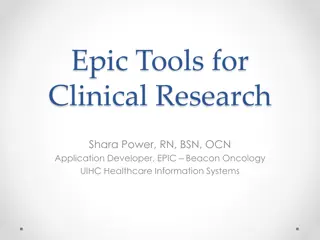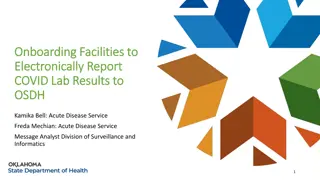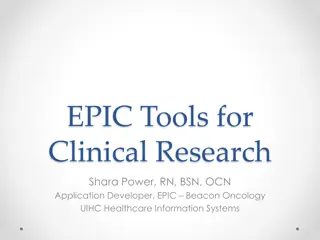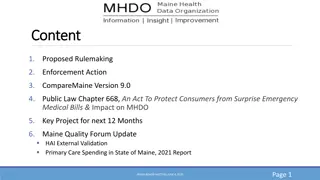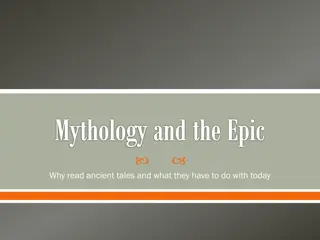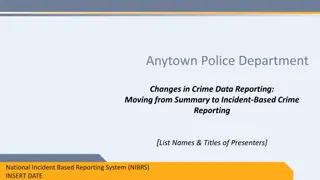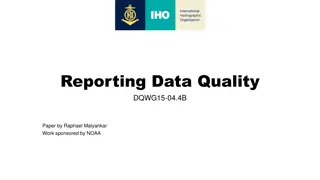Introduction to Epic Data Reporting in Healthcare
Epic provides a comprehensive reporting workbench for healthcare organizations, allowing users to access detailed patient data, generate reports, and conduct administrative tasks efficiently. The reporting tools offer a range of functionalities such as data analysis, patient identification based on specific criteria, and real-time information retrieval. Explore the capabilities of Epic's reporting workbench for effective data-driven decision-making in healthcare settings.
Download Presentation

Please find below an Image/Link to download the presentation.
The content on the website is provided AS IS for your information and personal use only. It may not be sold, licensed, or shared on other websites without obtaining consent from the author.If you encounter any issues during the download, it is possible that the publisher has removed the file from their server.
You are allowed to download the files provided on this website for personal or commercial use, subject to the condition that they are used lawfully. All files are the property of their respective owners.
The content on the website is provided AS IS for your information and personal use only. It may not be sold, licensed, or shared on other websites without obtaining consent from the author.
E N D
Presentation Transcript
Epic Data Sources: Reporting Workbench Intro to Query Tools for Research Spring 2021 1
Epic at a glance In place at MSH since 2011, MSQ since 2013 In clinics since 2008 (now hundreds) Documentation from providers, nurses Visit details, timestamped events Orders, flowsheets Pulls in data from ADT, Bed Mgmt, Labs, Rads, Muse, Echo, Cath, Path, financials & more
Self Service Tools Built in Epic Tools Slicer Dicer Reporting Workbench Need to Work with Data Team Caboodle (not self-service) Other Sources Mount Sinai Data Warehouse (MSDW)
Data in Epic Epic Clarity Epic Caboodle Epic Hyperspace hierarchical database relational database 30000+ SQL tables relational database Clarity s greatest hits real time not real time not real time Caboodle/Clarity Searches Chart Review Slicer/Dicer Epic Reporting Workbench + fast - requires some set-up - requires SQL competency + in the EPIC interface - cumbersome to use + real time + less knowledge required - slow (smaller searches) Reporting Teams (MS:DW and Epic Reporting) + a lot of data and expertise - $$$ - slower turnaround
Epic Reporting Workbench Hierarchical Slow. And don t bother pre-filtering (sometimes a lack of specificity is good) Identify active/recent patients that match specific criteria Can return data on 10,000+ fields
Epic Reporting Workbench ALWAYS PHI Links to chart Very precise Current Uses Administrative/Operations Reports Data-gathering before meetings Abstracts (May require IRB) Grant proposals (May require IRB)
Epic Reporting Workbench Admin Use Examples: Who currently meets sepsis criteria in ED? Among patients discharged 24+ hours ago, which providers haven t signed their notes? What is the turnaround time for nurses on 10C to acknowledge new orders? Which patients got procedural sedation last week (and was the documentation satisfactory?)
Epic Reporting Workbench Research Use Examples: Providers ignoring BEERS criteria upon elderly d/c Is 10/10 pain more likely to be admitted? What are patient characteristics in mis-triaged visits?
You can find RWB under the Epic main menu. Look for Reports.
Report criteria can be modified as needed You can search for existing reports in the Library
Select the information you want to see in your report
You can search for more information about the available variables
The summary tab allows for you to group your results and sum variables
Be Patient! Some reports may take time to run
Make sure you load all of your encounters before any sorting. Large reports may be truncated initially. This is the what your report will look like. Each encounter will be one row of data with each of the columns you selected .
Epic Reporting Workbench Pros: No external costs Very precise Can adapt existing reports for your own needs Can return almost anything related to a visit Easy to export to Excel or jump into chart Some reports can be automated/e-mailed Cons: Struggles above visit-level (patient, department) Limited within visits information (flowsheets, movements) Slooooooooowwwww Requires Epic access (read only is fine) May require two queries (e.g. orders+notes) and join tables
Important to Remember How are you using the data: Research requires an IRB!!! Speak with research faculty about requirements IRB determines if study is exempt Start with least amount of PHI necessary You are responsible for your data Keep data secure (computer, email, drives) Reported data must be aggregated for research purposes
Next Steps Read and complete the attestation If you are unsure of how to proceed: Submit a request to the EM Analytic Core Review the tutorials Discuss your project with a research faculty member Check out the research trainings offered
